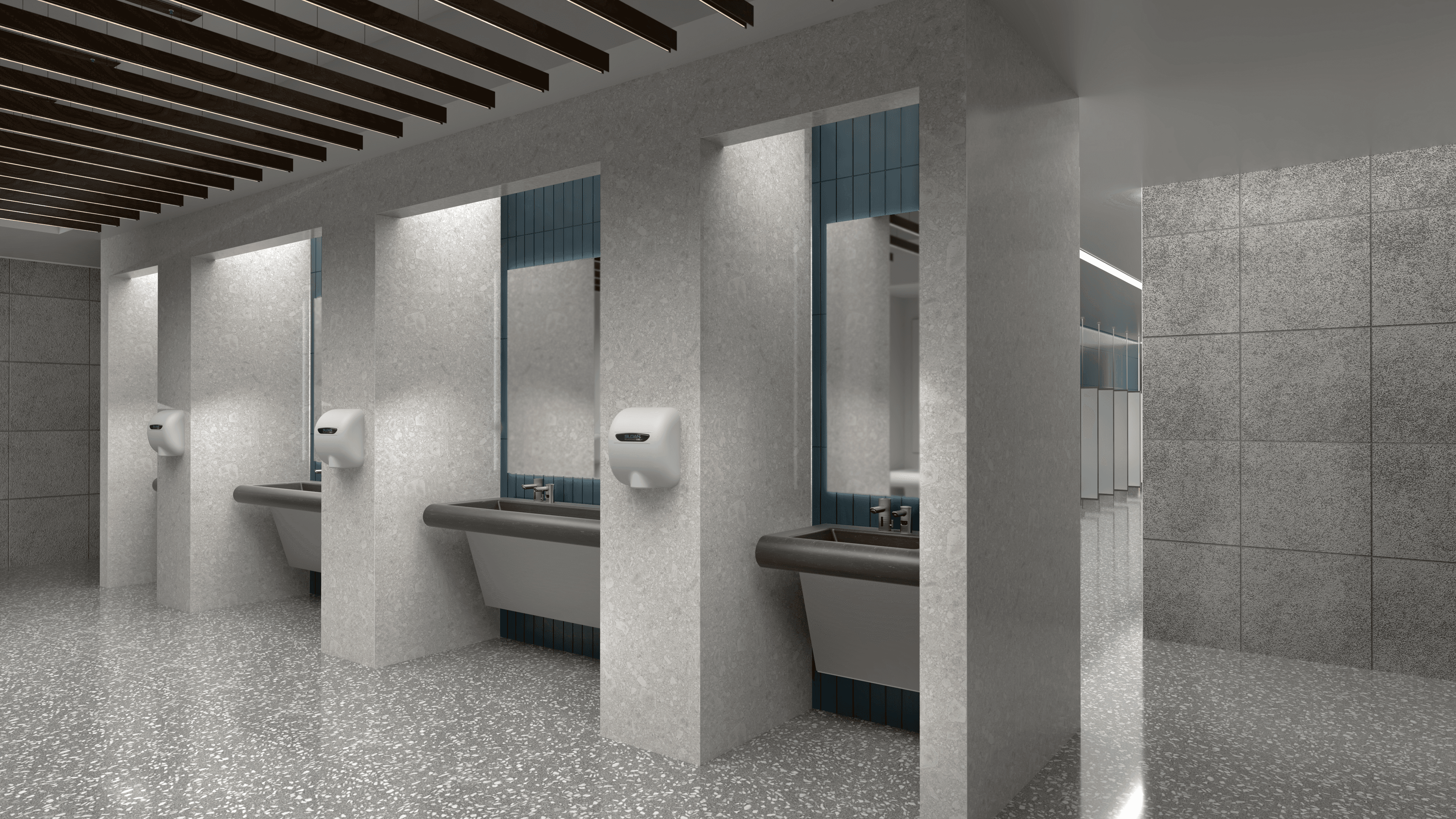Commercial Restroom Design: Psychological Principles for Vulnerable Brains
July 17, 2025

Public restrooms are different from all other public spaces. They are private, but also public spaces, thus creating a certain degree of vulnerability — and people’s brains act differently when they feel vulnerable.
Well-designed commercial restrooms reassure brains that they’re safe and secure, with design elements and technology that leverage real psychological principles. If you design or build restrooms you probably employ these principles instinctively, but you might pick up a couple of new ideas by seeing a restroom through the lens of a vulnerable-feeling brain.
“Am I Safe?” — Perceptions of Cleanliness and Safety
The first question the vulnerable brain asks in a public restroom is, “Am I safe?” It’s primarily a question of hygiene — the brain knows restrooms can harbor pathogens, so the designer’s job is to reassure the brain that the restroom is clean.
That’s why bright lighting, lighter colors, and smooth surfaces are so common in commercial restrooms — they don’t give stains anywhere to hide. When someone’s brain sees these surfaces, it registers that there’s been a recent cleaning and creates reassurance that germs are not a threat.
One more scary element is standing water on the restroom floor. That’s why Sloan’s AER-DEC® Integrated Sinks are so comforting to vulnerable brains. They combine a soap dispenser, faucet, hand dryer, and sink basin into a single touch-free system that prevents people from dripping water onto the floor on their way to the hand dryer.
“Is This My Turf?” — Privacy and Territoriality
Why is everyone more comfortable in their home’s restrooms than public restrooms? Because their brains recognize that territory as their “home turf” and crave that personal space.
In a public restroom, a brain seeks reassurance that it has its own small bit of personal space where no one can interfere. That’s why partitions are so important — not just around water closets but also between urinals. Stalls with taller partitions and smaller gaps between panels increase comfort even more.
Touchless faucets and sensor flushometers convey another level of reassurance, because one of the benefits of “home turf” is not having to touch things that many other people have touched.
“Can I Relax Here?” — Comfort, Inclusivity, and Accessibility
Vulnerability is stressful. People’s brains would rather relax, so restroom design that makes decisions easy for people can ease vulnerability and improve the user experience.
- Clear signage: If you have gendered restrooms, make sure people can quickly identify which is which.
- Intuitive layouts: Is the restroom set up for a natural flow of user behavior (e.g., entry to stall to sink to exit)? Make sure people don’t have to look for their next step.
- Gender-neutral restrooms: Designs that help people feel included reduce vulnerability. 78% of workers say workplace inclusivity is important, and 75% say they are comfortable with certain gender-neutral restroom designs.1
- Family-friendly restrooms: Taking a small child into the “wrong” gendered restroom can take a parent’s vulnerable feelings to new levels — but letting moms, dads, and kids of both genders use the restroom together helps everyone feel safer.
- Ability-accessible features: For restroom users with different abilities and needs, features such as multi-level sinks and support bars can help brains feel much less vulnerable.
As noted above, you’ve likely incorporated many of these ideas all along. But whether you’re creating completely new restrooms or updating existing ones, viewing restroom design with these psychological principles in mind can help make life more pleasant for your users’ brains — and the rest of their bodies, too.
For more ideas and solutions about giving your next restroom design a better user experience, contact Sloan!
1—IA Interior Architects, “The Restroom Revolution: The Future of Inclusive Restroom Design,” October 2022
Stay up to date
Sign up for the Sloan blog to receive information on the latest trends in commercial building, technology advancements and product updates. It's the leading source of industry news for architects, designers, engineers and contractors.